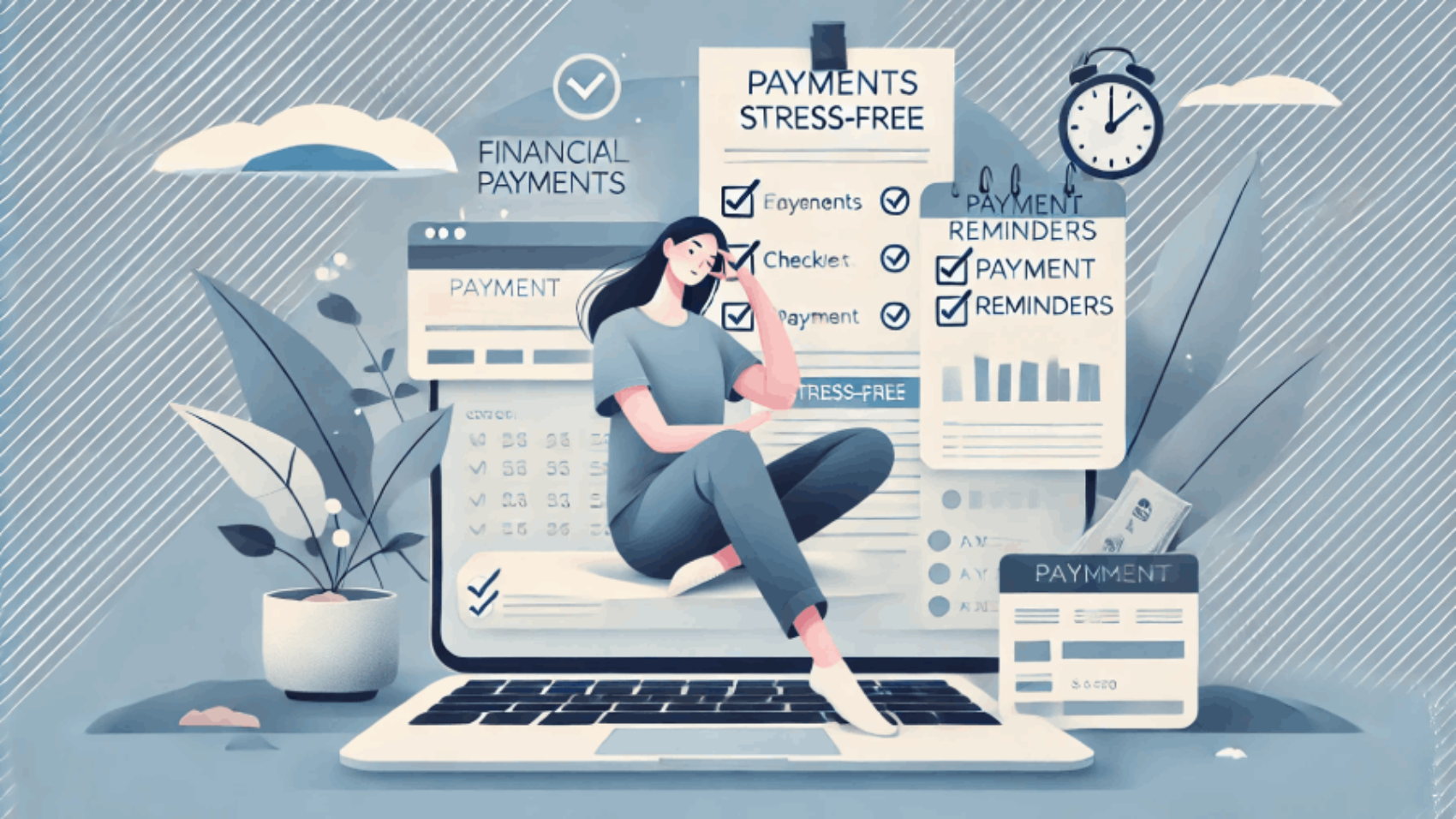Managing payments can be overwhelming, whether you’re handling personal finances or running a business. Late payments, missed deadlines, or disorganized records can lead to stress and financial losses. However, with the right tools and strategies, you can simplify this process and stay on top of your financial obligations.
One effective solution is the use of payment templates, which help streamline record-keeping and ensure every transaction is documented properly. In this guide, we’ll walk you through the steps to manage payments efficiently and introduce tools that can make the process stress-free.
1. Understand the Importance of Payment Tracking
Payment tracking is vital for financial health and organization. Whether you’re an individual or a business owner, staying on top of your payments ensures:
- Avoiding Late Fees: Timely payments help you avoid penalties and maintain good standing with creditors.
- Better Budgeting: Clear records help you monitor cash flow and allocate funds effectively.
- Legal Protection: Documenting payments can protect you in disputes or audits.
For businesses, payment tracking is essential for maintaining relationships with clients, suppliers, and employees. Tools like payment templates simplify this process by offering customizable formats for clear and consistent record-keeping.
Proper record-keeping doesn’t just benefit current transactions—it lays a foundation for long-term financial success. For additional tips on creating effective financial records, refer to the IRS Recordkeeping Guide.
2. Use Payment Templates to Stay Organized
A payment template is a pre-designed document that helps record transactions systematically. It’s an easy way to manage details like payment dates, amounts, methods, and recipients. You can customize templates for personal or professional needs, ensuring all necessary information is included.
Key Elements of a Payment Template:
- Payment Date: Record the exact date of the transaction.
- Payee Information: Include the name and contact details of the recipient.
- Payment Amount: Specify the amount paid.
- Payment Method: Document whether it’s cash, credit, check, or another method.
- Purpose of Payment: Clearly state why the payment was made.
- Receipt Number: Add a reference number for tracking.
3. Leverage Technology for Payment Management
In today’s digital age, payment management has become easier with the help of technology. Several apps and software solutions are available to automate tracking and ensure accuracy.
Recommended Tools:
- Budgeting Apps: Apps like Mint or YNAB (You Need a Budget) can help you set payment reminders and track expenses.
- Accounting Software: Tools like QuickBooks or FreshBooks are great for businesses needing detailed financial tracking.
- Spreadsheet Templates: If you prefer manual tracking, use customizable spreadsheets on Excel or Google Sheets.
These tools integrate seamlessly with payment templates, making it easy to create, update, and share payment records. Choosing the right software depends on your specific needs. Check out this comparison of budgeting apps to see what suits you best.
4. Set Up Payment Reminders
Late or missed payments can lead to unnecessary stress and additional costs. Setting up reminders ensures you never miss a deadline.
How to Create Effective Reminders:
- Calendar Alerts: Use digital calendars like Google Calendar to set recurring reminders.
- Mobile Apps: Payment apps like PayPal and Venmo send notifications for due dates.
- Automated Payments: Schedule recurring payments for fixed expenses, such as rent or subscriptions.
Automated payment systems are especially useful for recurring expenses, ensuring consistent, on-time payments. To understand how to use automation effectively, review this guide to automatic payments.
5. Track Incoming Payments
For businesses or individuals receiving payments, it’s equally important to track incoming funds to maintain accurate records and avoid discrepancies.
Tips for Tracking Income:
- Issue Invoices: Use professional templates to create clear, detailed invoices.
- Record Payment Details: Update your payment template each time you receive a payment.
- Monitor Bank Statements: Regularly reconcile your records with bank statements to catch any errors.
For businesses, tools like Zoho Invoice or Wave offer simple ways to create and manage invoices while syncing them with payment templates for seamless tracking.
6. Maintain Accurate and Up-to-Date Records
Consistency is key when it comes to financial management. Make it a habit to update your payment records promptly and accurately.
Best Practices for Record Maintenance:
- Designate a Time: Set aside time weekly or monthly to review and update payment records.
- Organize Digitally: Save documents in a structured folder system for easy retrieval.
- Back-Up Files: Use cloud storage solutions like Google Drive or Dropbox to protect your data.
Digital backups ensure your records are safe and accessible, even in the event of technical failures. Explore this guide on effective file organization to create a system that works for you.
7. Address Discrepancies Promptly
Mistakes or inconsistencies in payment records can lead to financial disputes. It’s important to address any discrepancies as soon as they arise.
How to Resolve Discrepancies:
- Double-Check Records: Compare your payment templates with bank statements or receipts.
- Communicate Clearly: Reach out to payees or payers to clarify any misunderstandings.
- Document Resolutions: Keep a record of all corrections for future reference.
Taking a proactive approach will help you avoid long-term issues and maintain trust in your financial dealings.
FAQs
Why Should I Use a Payment Template?
Payment templates streamline record-keeping, reduce errors, and provide clear documentation for personal or business use. They save time and ensure consistency.
Are Digital Tools Better for Payment Management?
Yes, digital tools automate reminders, tracking, and reporting, making payment management faster and more efficient. However, combining them with manual templates ensures thorough documentation.
How Often Should I Update Payment Records?
It’s best to update records immediately after a payment is made or received. For businesses, reviewing records weekly or monthly ensures accuracy.
Conclusion
Keeping track of payments doesn’t have to be stressful. By using tools like payment templates, leveraging technology, and maintaining consistent records, you can simplify your financial management process. Whether you’re handling personal expenses or running a business, staying organized ensures peace of mind and financial clarity.
Start today by downloading a customizable payment template and taking control of your finances effortlessly!

